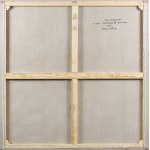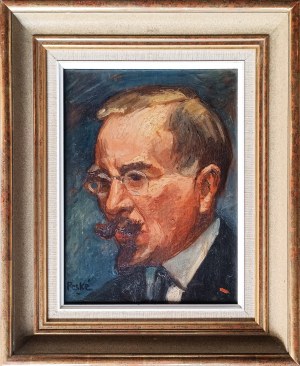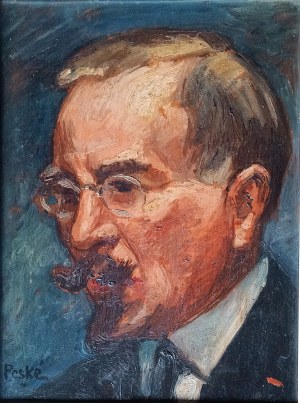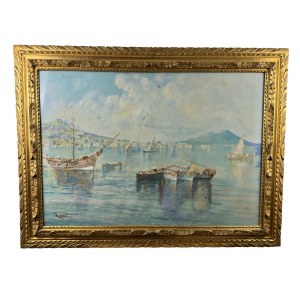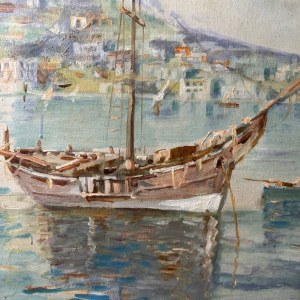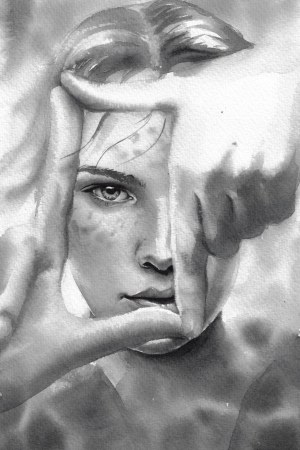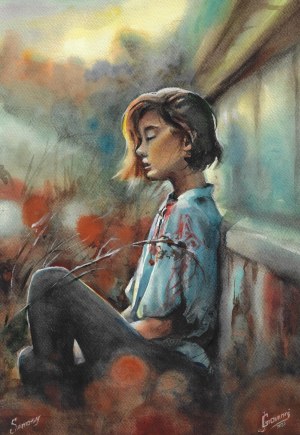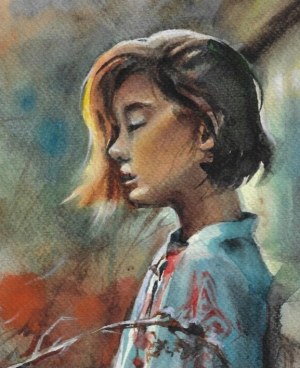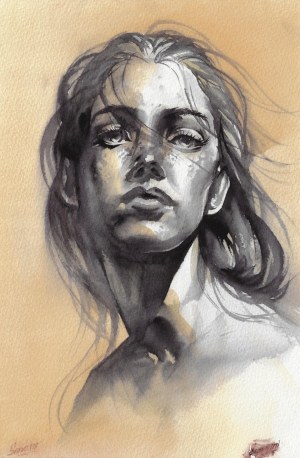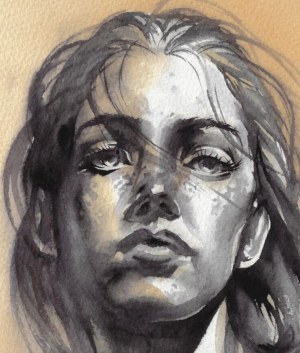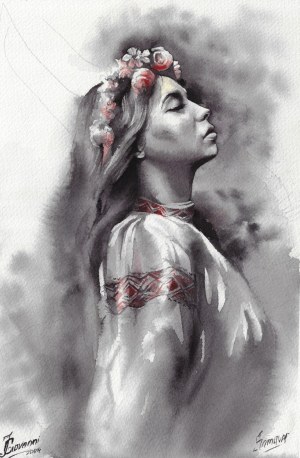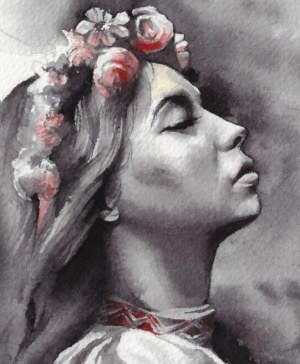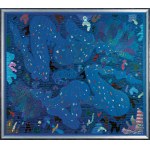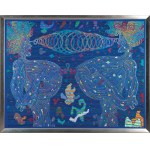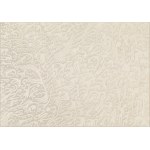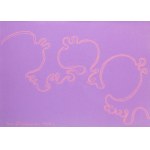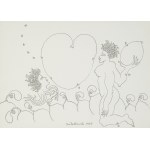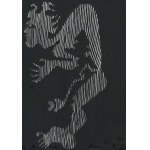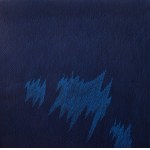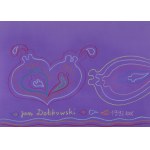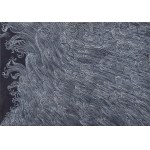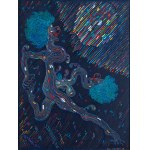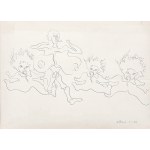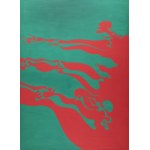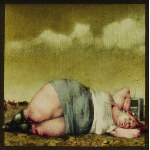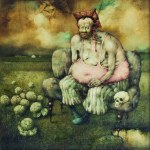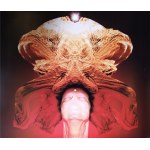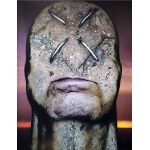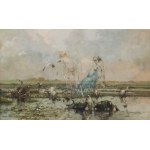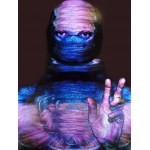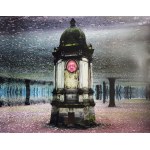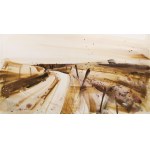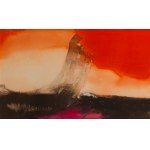Signed on the back p.g.: Jan Dobkowski | Z CYKLU "PAMUKALE IX" 2011 YEAR | ACRYL | 147 cm x 147 cm
Image exhibited and reproduced:
- Jan Dobkowski. Pamukale Pamukale Pamukale, Stefan Szydłowski Gallery, 5 May - 26 June 2012, p. 17.
The presented painting belongs to the series "Pamukale" created in 2011-2012. Its name refers to the town of Pamukkale (Tur. Cotton Castle) located in southwestern Turkey next to the ancient Hierapolis. Its picturesque travertine terraces and elliptical thermal pools are a well-known tourist attraction. The unparalleled landscape is the result of a process that has been going on for about fourteen thousand years - calcium carbonate precipitates from the water flowing out of the hot springs, the sediments of which "sculpt the slope" of Cökelez Mountain by forming into stalactites, stalactites, sills and semicircular depressions. This "natural wonder" made a great impression on Jan Dobkowski:
In 2011, he and Maja went on vacation to Turkey, during which we visited Pamukkale National Park. After returning from Turkey, still fascinated by the place, I painted a series of paintings. Being there made me feel extremely strongly the brightness of the white and light turquoise blue, the coolness of the water and the delicate clearances of yellow appearing in the air in places. While painting these paintings, I felt again as if I were there, but they were not representations of those landscapes, but delicate, almost abstract forms permeating each other like blue clouds (J. Dobkowski, Autobiogram [in:] Jan Dobkowski, ed. M. Kuźmicz, Arton 2020 Foundation, p. 14).
A dozen paintings from the series, including - presented in the catalog Pamukale IX - were shown at an exhibition held at Szydłowski Gallery in 2012. The publication accompanying the exhibition wrote about the characteristic way of organizing the surface of the canvases: "In paintings of larger formats and the largest ones 149 [sic!] by 147 cm, the artist left large areas of the canvas unpainted, and with the help of a blue line built an 'organic' grid, which seems to pour onto the canvas and settle on it, introducing a tension between its internally geometric, relatively ordered structure and externally organic form." Sparing in means, the rhythmic compositions are a consistent realization of the artistic credo of "Dobson". - A line is a thought. It is the one that the artist has used for years to describe the world. In an interview with Elżbieta Dzikowska he said: I know how to show the air, the earth - with what color, with what line, with what density. I don't create fiction. Let you see how the forest undulates, how the crops bow. Linearly. Nature has tied itself to linearity for me. The author's words seem to be the key to interpreting - inspired by natural phenomenon - white and turquoise abstractions.
Jan Dobkowski (Łomża 1942, lives in Warsaw) studied from 1962-1968 at the Faculty of Painting of the Warsaw Academy of Fine Arts under Prof. Juliusz Studnicki and Jan Cybis. While still a student, in 1966, he formed an artistic duo, with Jerzy (Jurry) Zieliński as his partner. Their first joint exhibition, entitled Neo-Neo-Neo, took place in Warsaw in 1967, and they exhibited together until 1970. 1968 saw Dobkowski's first green and red paintings (using the pseudonym Dobson at the time). In these works, operating with supple, wavy lines, in which the influence of Art Nouveau was seen, the artist used methods straight out of op-art to produce optical illusions (swirling, blurring, apparent movement of forms). In parallel with his paintings, he also created plate and foil forms for mounting in space. A gold medal at the Golden Grape Symposium in Zielona Gora in 1971 and a nearly year-long stay in the US on a Kosciuszko Foundation scholarship in 1972 were the next stages of the painter's successful career. A marked change in the mood and meaning of his works came with the events of 1980-1981, especially the introduction of martial law. At that time he marked monochromatic, dark canvases with faint, flaccid lines of drawing. The most common motifs were patriotic and religious symbols, spiced up with titles alluding to the realities of the time. Another radical change occurred around 1990. The symbolic harbinger of the new period became a huge, joyful painting exploding with a wealth of colors, shapes and movement ...and life is flowing.... (394 x 588 cm) from 1990-1991. Similar formal features characterize the artist's work throughout the decade of the 1990s. In parallel with painting, Dobkowski works on drawing, which is a very important complement to his work.




